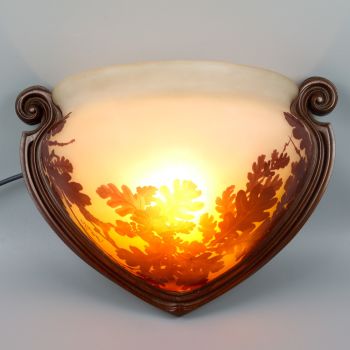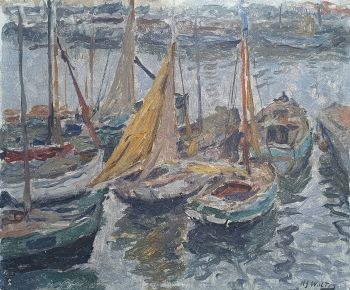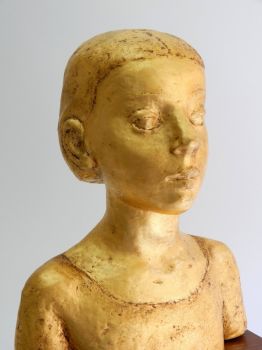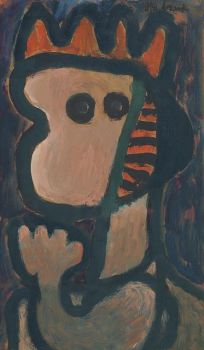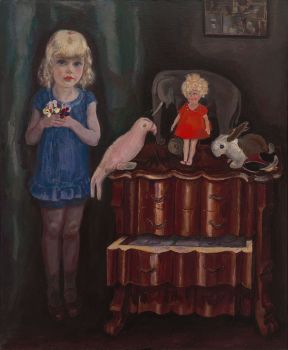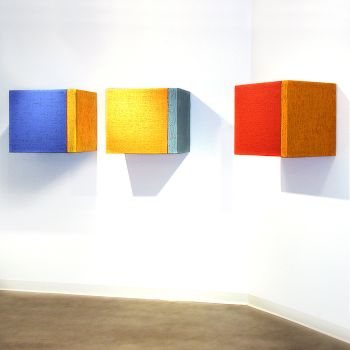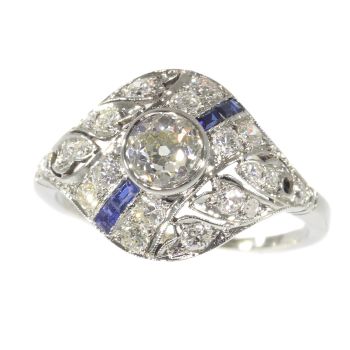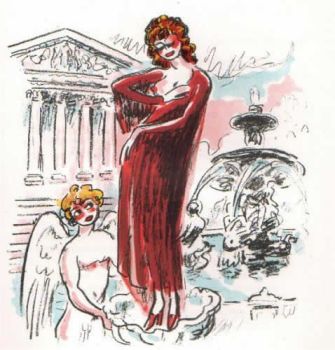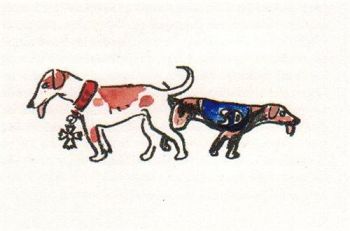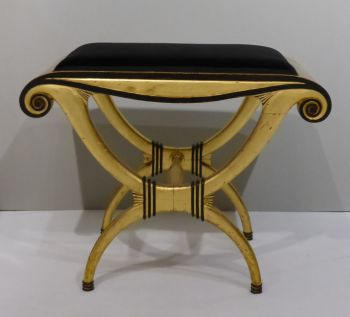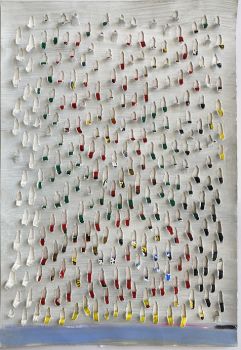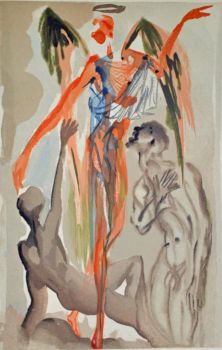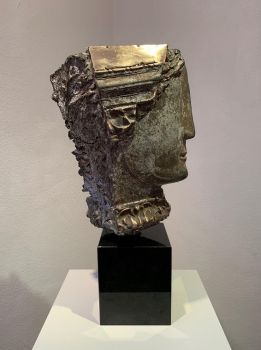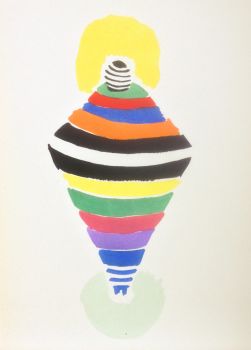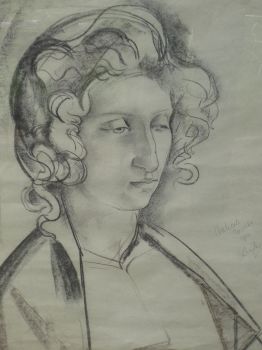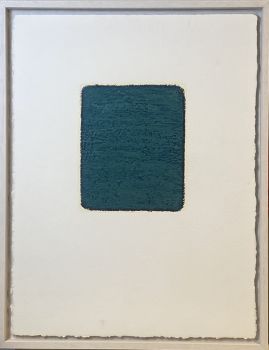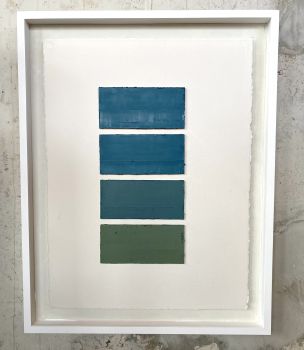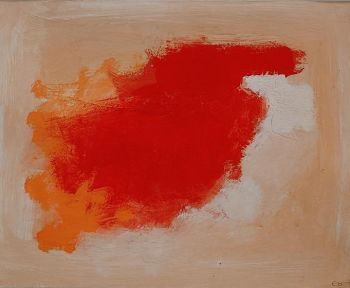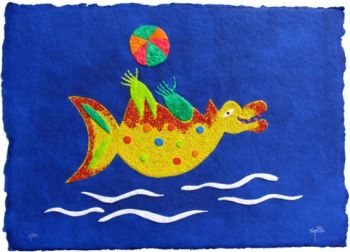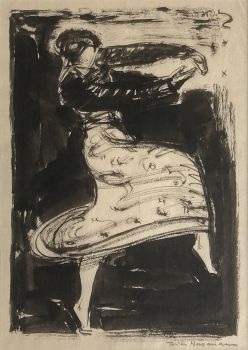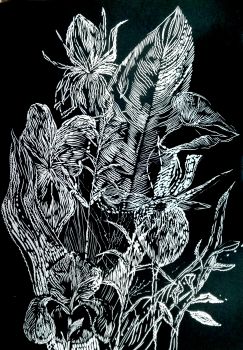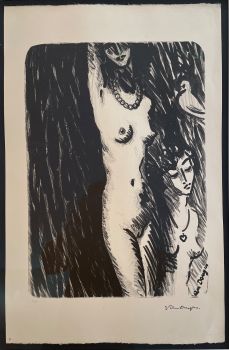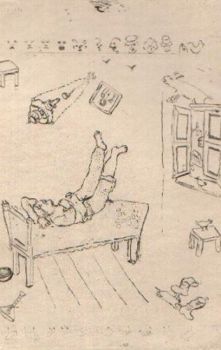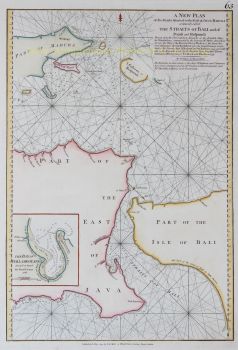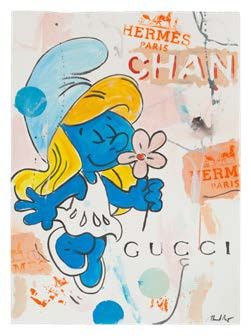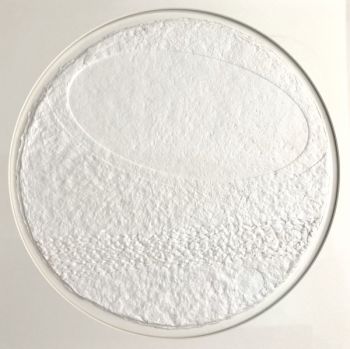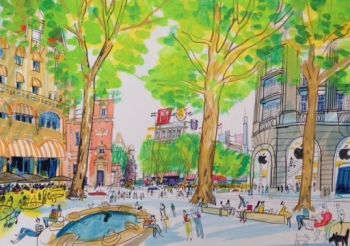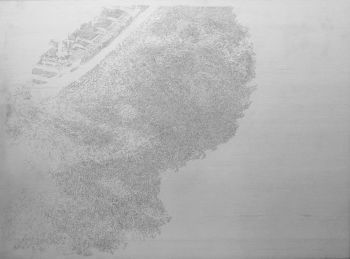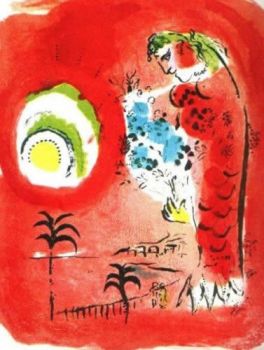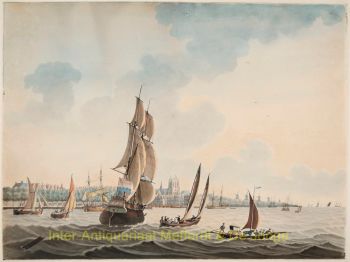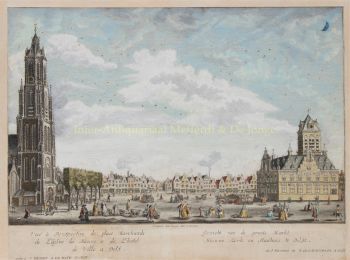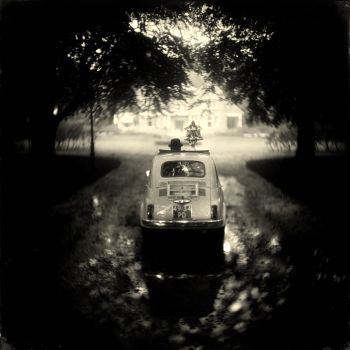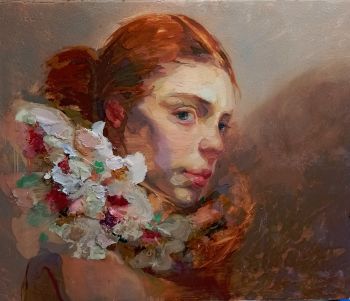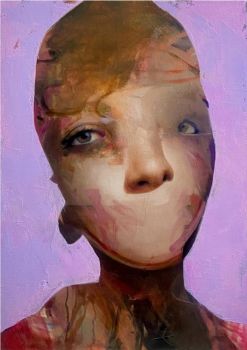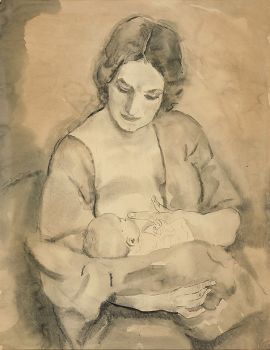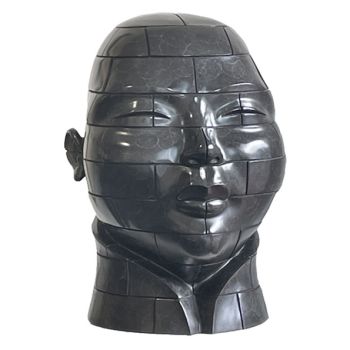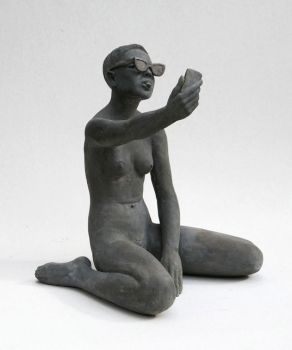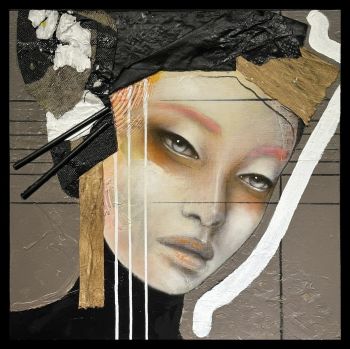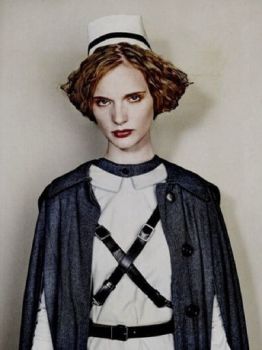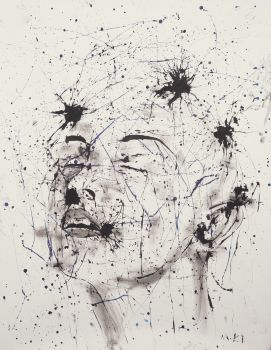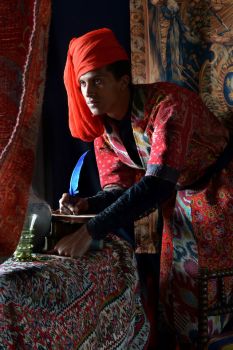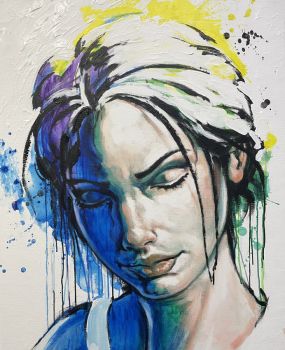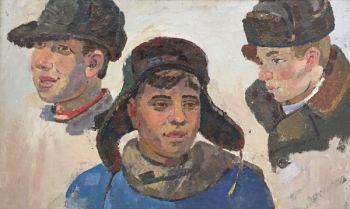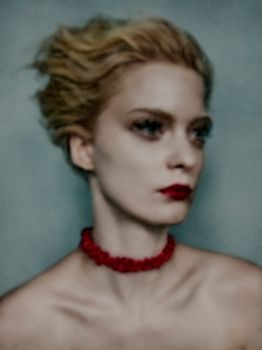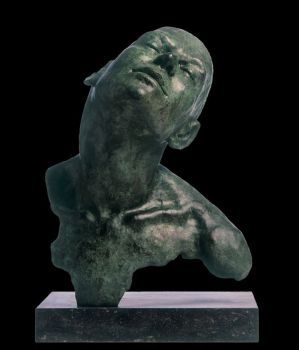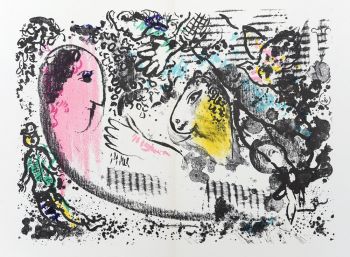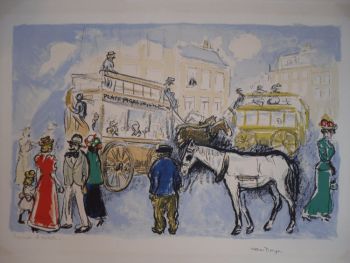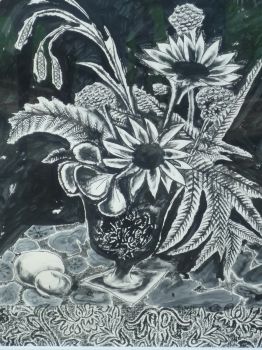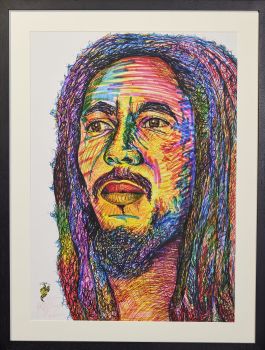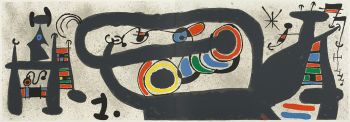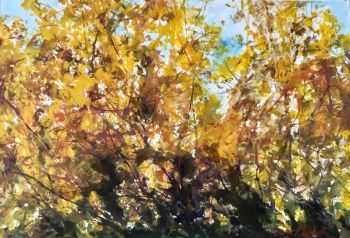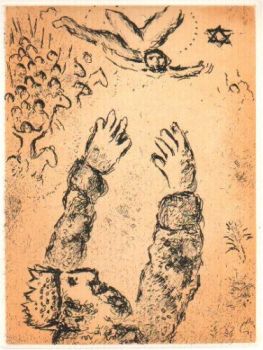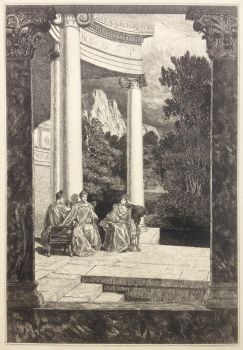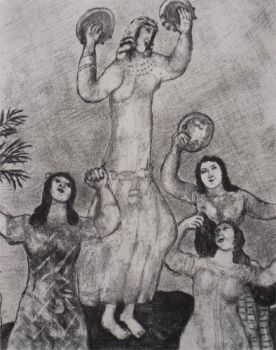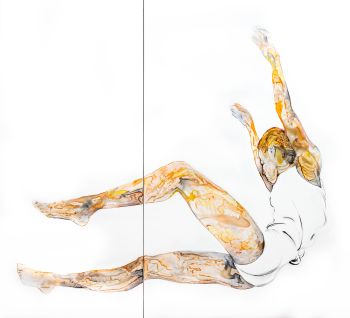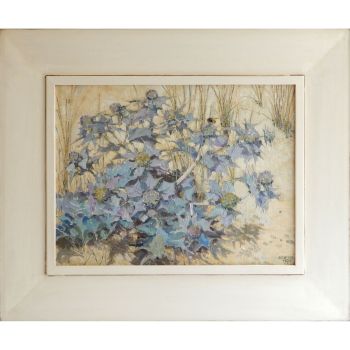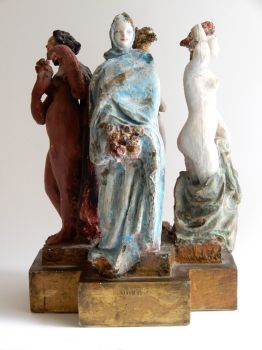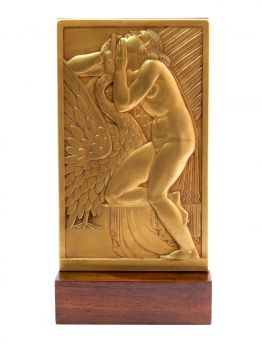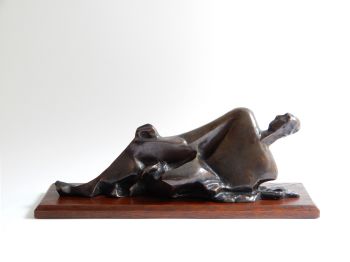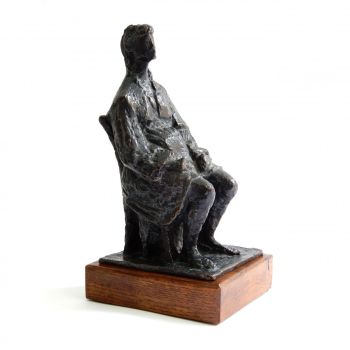Ink drawing 'Femme à la cigarette' 1920 - 1930
Jacques Villon
Encrer
32 ⨯ 38 cm
ConditionGood
Prix sur demande
Dille Art
- Sur l'oeuvre d'artA swift ink sketch depicts a young woman, casually smoking and casting a somewhat bored glance towards her portraitist. Exquisitely captured with just a few strokes, Jacques Villon (FR. 1875-1963) has concentrated his focus on her face, while allowing the remaining lines to fade away, seemingly irrelevant.
Is she his model, taking a moment for a cigarette break after posing? Or perhaps it's a quick sketch made in a bar, where he spots her seated, appearing a tad weary and disinterested. Nevertheless, it exudes the ambiance of Paris circa 1920, as if Jacques Villon has encapsulated the essence of the era on a mere piece of paper.
And he was indeed a master in various realms – from being an illustrator for newspapers, magazines, and posters in the early stages of his career to his later acclaim as a world-renowned draftsman, printmaker, and painter, a pioneer of Cubism, and founder of the famed 'Groupe d'Or' or better known as 'Groupe Puteaux', a true avant-garde movement.
The ink drawing is signed in the lower left corner with 'Jacques Villon'.
Biography:
Jacques Villon, born Gaston Duchamp on July 31, 1875, in Damville, France, was a prominent French artist who played a significant role in the development of Cubism. As the older brother of Marcel Duchamp, one of the founders of Dadaism, and Raymond Duchamp-Villon, a sculptor, and sister Suzanne Duchamp, a painter, Villon grew up in an artistic family that nurtured his passion for art. To distinguish himself from his brothers and sister, he eventually adopted the last name of the French medieval poet François Villon and began calling himself Jacques Villon.
Villon, schooled at the Académie Julian, began his artistic career as an illustrator and graphic designer. At the time, he was influenced by Edgar Degas, Henri de Toulouse-Lautrec, and Théophile-Alexandre Steinlen, but he longed for more depth and expression in his work. He experimented with various styles and techniques before finding his true calling in Cubism, an avant-garde movement that challenged traditional notions of space and form.
In his early works, he showed influences of Impressionism and Post-Impressionism, but he quickly evolved into a more experimental style.
In the early years of the 20th century, Villon joined the circle of artists known as the Cubists, including Pablo Picasso, Georges Braque, and Juan Gris.
Together with his brother Marcel Duchamp, Raymond Duchamp-Villon, Albert Gleizes, Fernand Léger, Juan Gris, and André Lhote, he founded the 'Groupe Puteaux', named after the suburb of Paris where he had been living since 1906 and where the group gathered in Jacques Villon's studio. They were also known as the 'Groupe d'Or'.
The group was an important center of experimental art and a breeding ground for new ideas and techniques.
Villon's work as a Cubist is characterized by his use of geometric shapes and the fragmentation of forms and space. He was a master at combining multiple viewpoints into a single image, giving his paintings a sense of dynamism and complexity.
In addition to his work as a painter, Villon was also active as a printmaker and sculptor. He made numerous drawings, etchings, engravings, and woodcuts, and his work in the graphic arts was highly regarded.
Throughout his career, Villon exhibited regularly in Paris and other major art centers around the world. His work was recognized and appreciated for its innovative approach to art and its significant role in the development of Cubism.
Jacques Villon died on June 9, 1963, in Puteaux, France, but his influence on modern art continues to live on. His work is still admired and studied as an important part of modern art history, and his contribution to the Groupe Puteaux and Cubism is recognized as invaluable to the art world.
Many major museums have a work by Jacques Villon in their collection, such as the MOMA, New York, Bibliothèque Nationale Paris, Museum of Fine Arts Boston, Guggenheim New York, Musée Art Moderne Ville de Paris, Art Institute of Chicago, and many others, including our own Rijksmuseum.
Literature:
- Benezit; Dictionary of Artists, volume 14, p. 340-344. Éditions Gründ Paris, 2006.
- Patricia Frantz Kery; , 'Art Deco Graphics', by Balanced House Ltd, Abrams, New York 1986. P. 53
-Douglas Cooper; 'The Cubist Epoch', Phaidon Press Limited Oxford in association with the LA County Museum of Art & the Metropolitan Museum of Art, 1976, P. 97, 100-2, 104, 109, 111, 112-4, 115,117-8, 121, 150, 155, 175,99, 316.
Condition:
There's a small tear in the paper and a crease in one corner, at the bottom left. Additionally, the paper has yellowed slightly with age.
Meisurements:
Drawing:
Length: 38 cm (14,96")
Width: 32,5 cm (12,8")
Framed:
Length: 58 cm (22,83")
Width: 52,5 cm (20,67") - Sur l'artiste
Jacques Villon (né le 31 juillet 1875 à Damville, Normandie, France - décédé le 9 juin 1963 à Puteaux, près de Paris) était un peintre et graveur français impliqué dans le mouvement cubiste ; plus tard, il a travaillé dans des styles réalistes et abstraits.
Villon était le frère des artistes Suzanne Duchamp, Raymond Duchamp-Villon et Marcel Duchamp. En 1894, il se rend à Paris pour étudier le droit, mais une fois là-bas, il s'intéresse davantage à l'art et passe les 12 années suivantes à rédiger des illustrations et des dessins animés pour les journaux.
En 1903, Villon est l'un des fondateurs du Salon d'Automne, une association d'exposants créée comme alternative au Salon traditionnel. Il commence à étudier la peinture en 1904. En 1906, il s'installe dans la banlieue parisienne de Puteaux, où il peut se consacrer principalement à la peinture.
Villon adopte un style néo-impressionniste dans ses premières peintures. Vers 1910, cependant, il commence à développer son style mature, dans lequel il combine une utilisation cubiste de formes géométriques plates avec une palette de couleurs lumineuses.
Lui et d'autres artistes d'influence cubiste (dont ses deux frères) formèrent un groupe appelé la Section d'Or en 1912 ; Villon a suggéré ce nom pour souligner l’intérêt du groupe pour les proportions géométriques.
Êtes-vous intéressé par l'achat de cette oeuvre?
Artwork details
Related artworks
- 1 - 4 / 24
- 1 - 4 / 24
- 1 - 4 / 24
- 1 - 4 / 24
Unbekannter Künstler
Japanese art deco lacquervase with Scarab beetle motif1920 - 1950
Preis auf AnfrageDille Art
1 - 4 / 12






